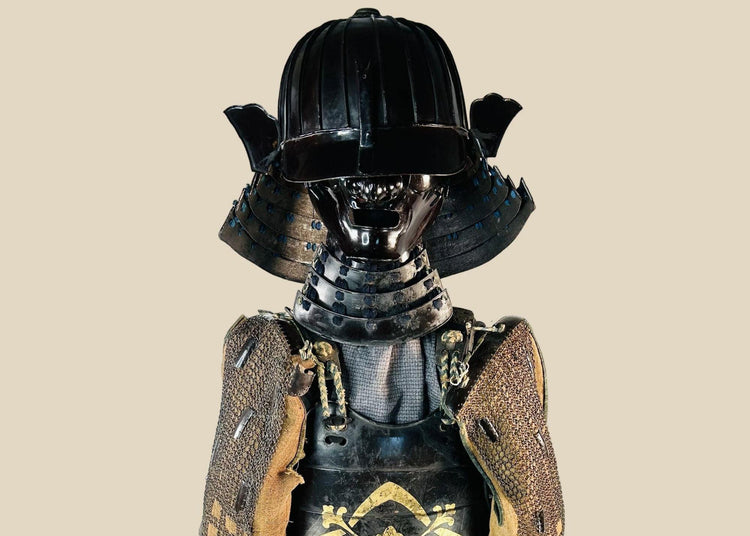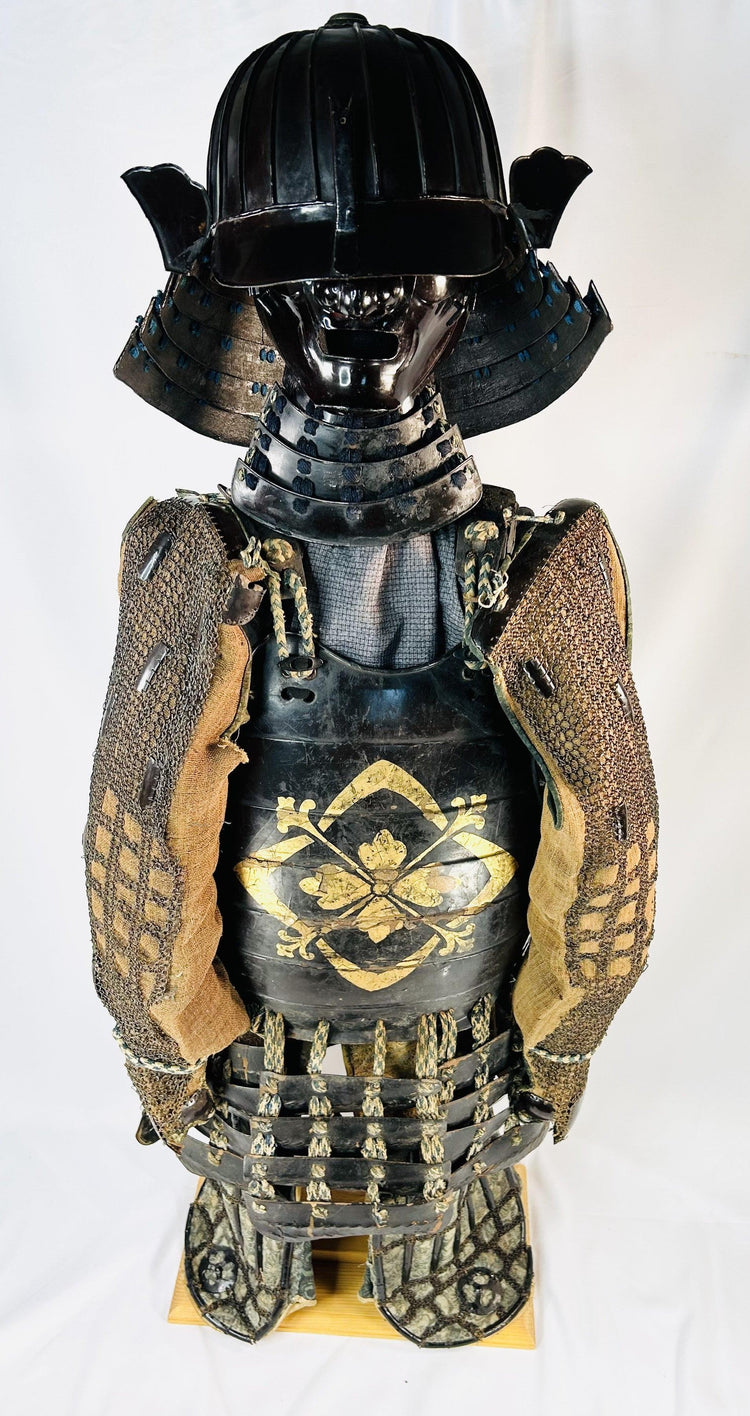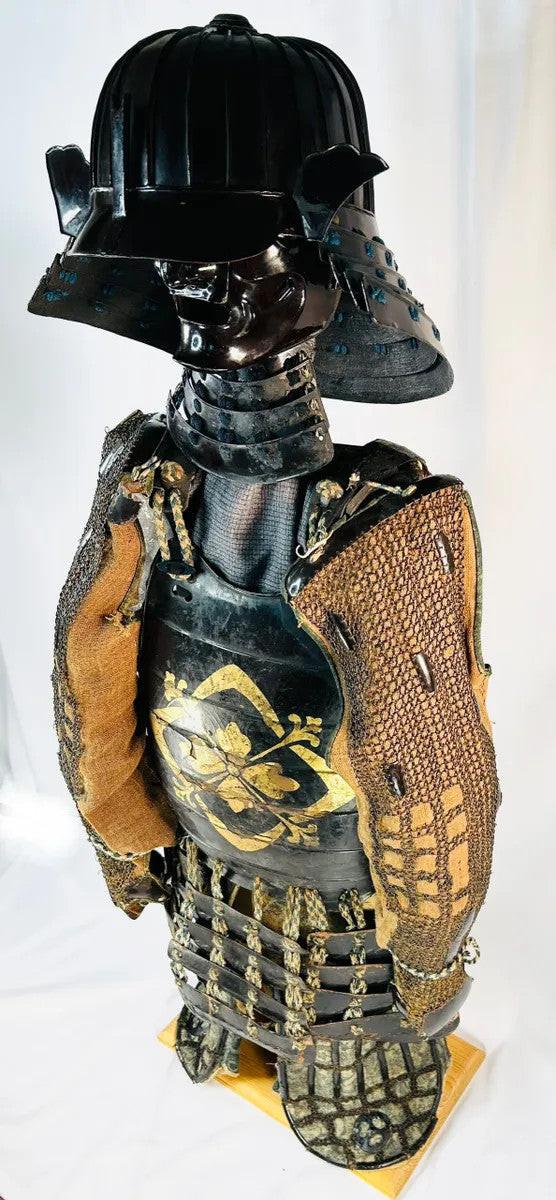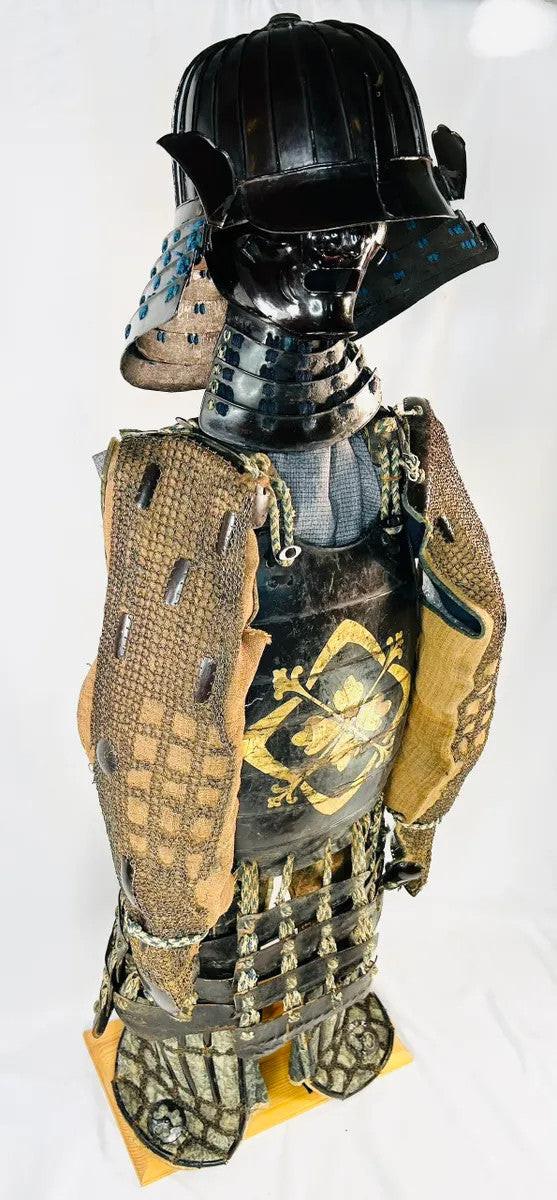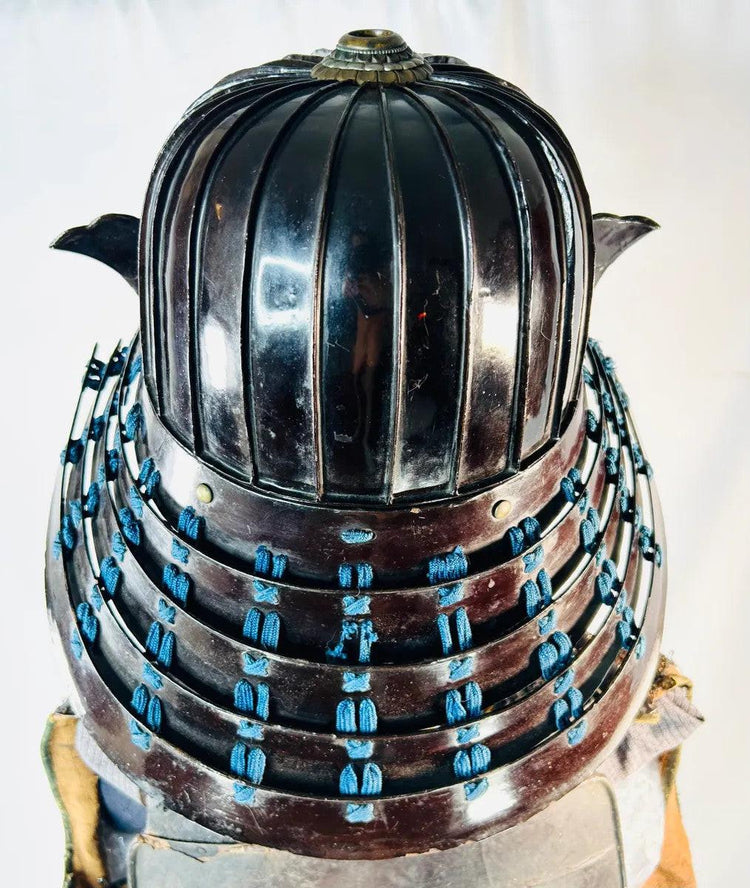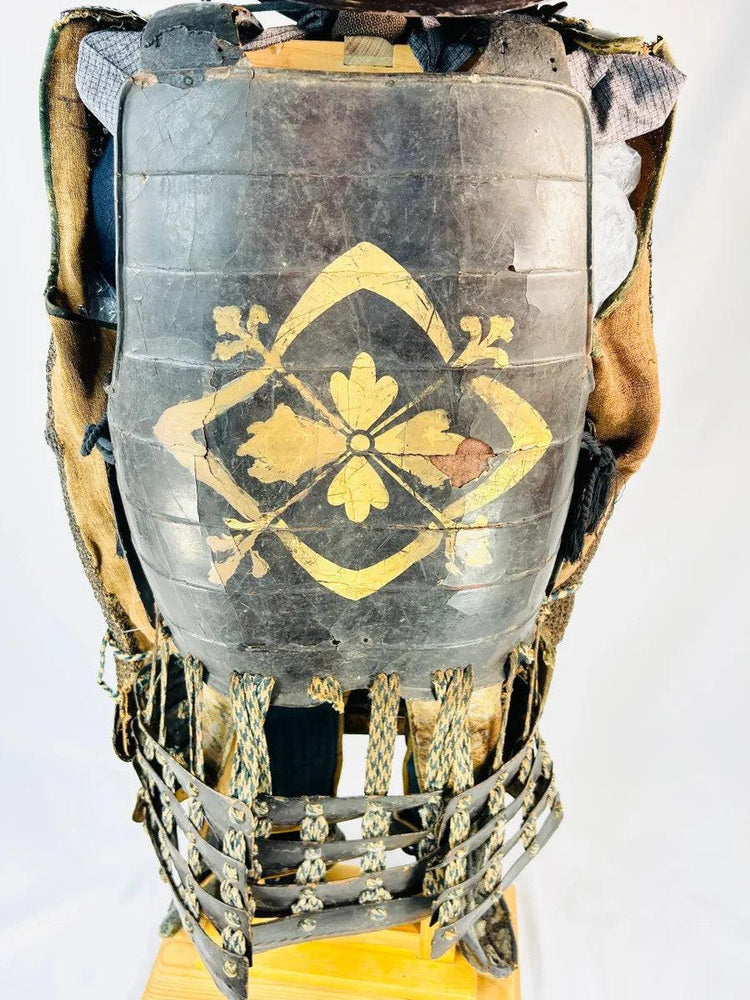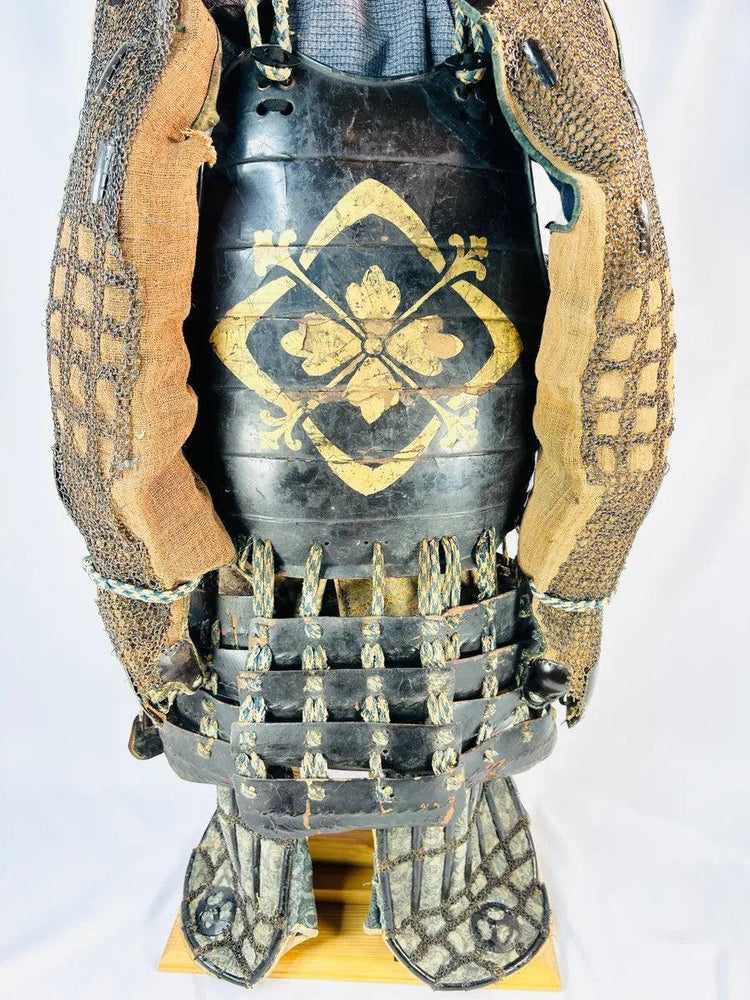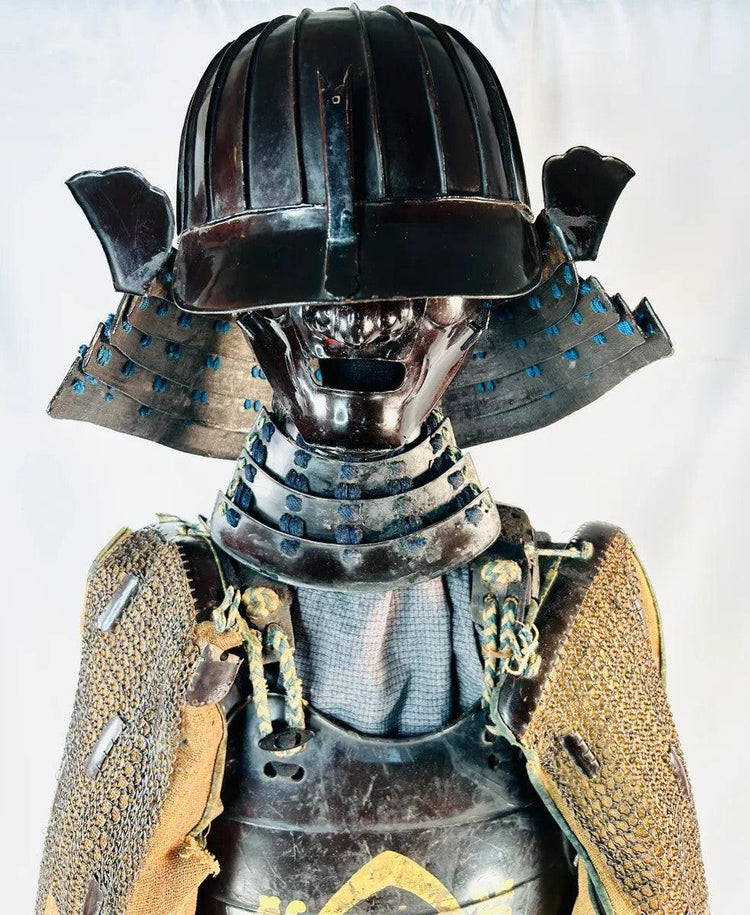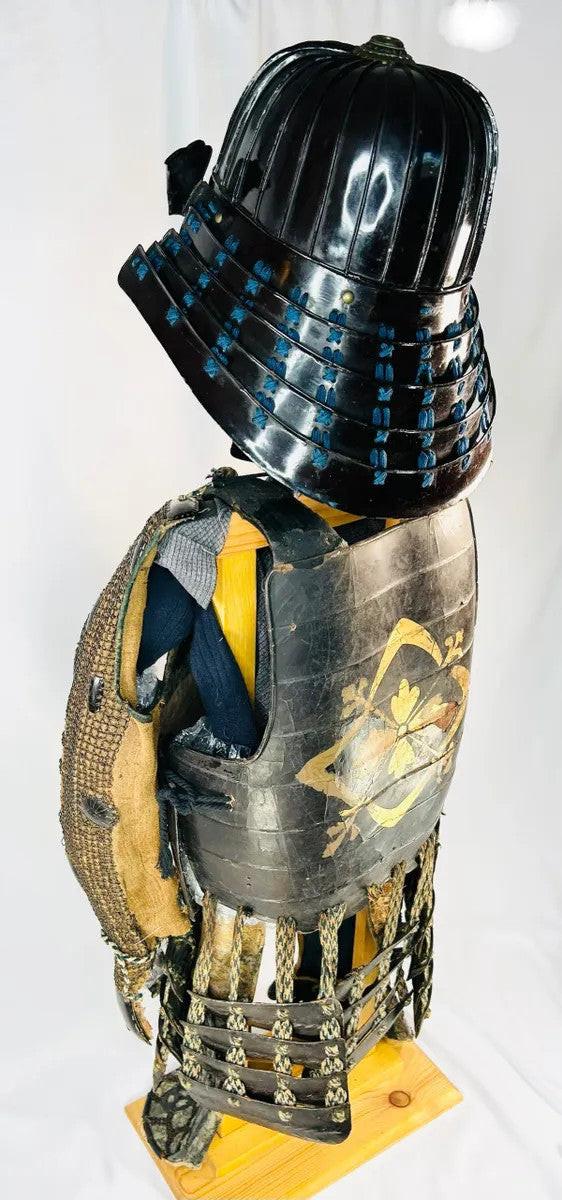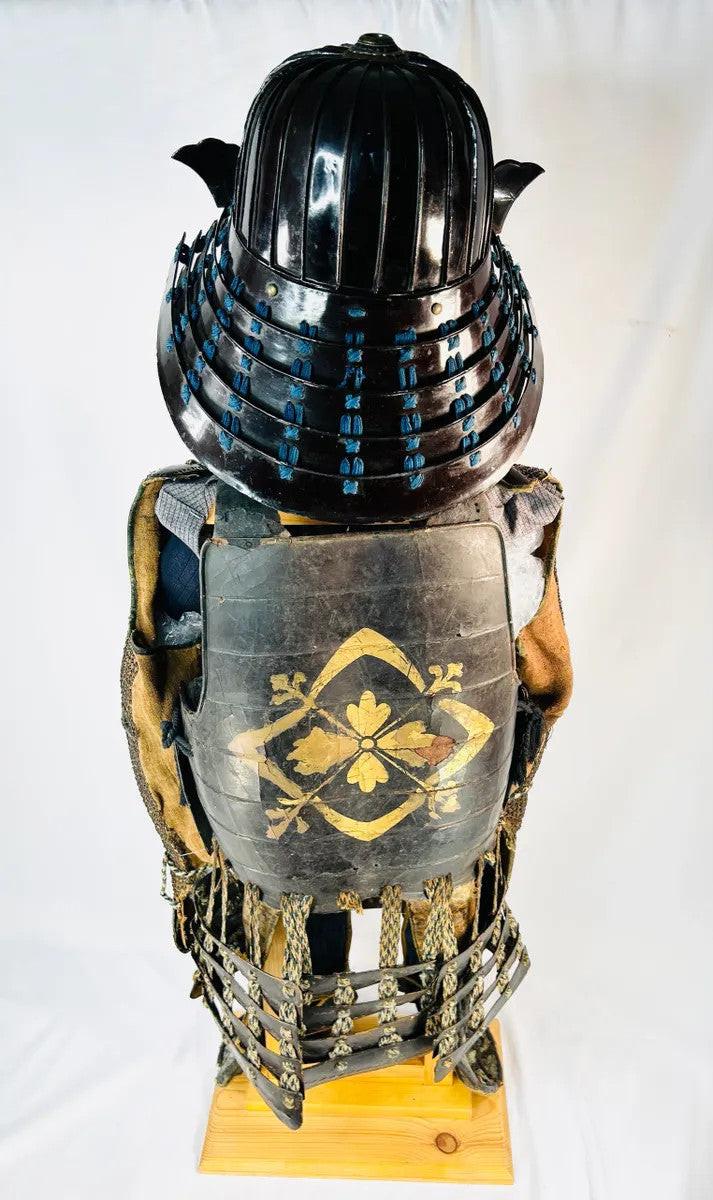Authentic Muromachi Era Samurai Armor | 1333–1573 | Japanese Warrior Armor Set with Gold Crest & Edo Period Lacing
Description
More
Less
Muromachi Samurai Armor Set (1333–1573)
Historical Context & Origin
Region: Japan
Material: Iron, lacquer, silk, textile, and leather
Period: Muromachi Period (1333–1573) with Edo-period elements
Description
This authentic Japanese Samurai Armor Set from the Muromachi Period (1333–1573) exemplifies the height of medieval Japanese craftsmanship. Featuring a finely forged suji-bachi kabuto (helmet) with lustrous black lacquer and a fierce menpo (facial armor), the set embodies the discipline, artistry, and power of Japan’s warrior class. Adorned with a gold-lacquered mon (family crest) symbolizing noble lineage and samurai rank, this armor stands as both a functional masterpiece and a work of art. Crafted from iron, lacquer, silk, textile, and leather, it is accompanied by a traditional wooden display stand, preserving its presence as a ceremonial and historical showpiece. The Edo-period silk lacing (odoshi) enriches its design with added color and texture, revealing centuries of continuity in Japanese armor-making tradition.
Key Features
- Muromachi Samurai Armor (1333–1573) with Edo-period elements
- 24-plate suji-bachi kabuto with black lacquer and extended fukigaeshi
- Full menpo facial armor with a fierce expression
- Gold-painted mon (family crest) on the lacquered cuirass
- Edo-period multi-colored silk lacing (odoshi)
- Chainmail (kusari) reinforced textile sleeves
- Wooden armor stand for display
Cultural Significance
This samurai armor is not only a functional battle gear but also a symbol of prestige, honor, and identity. The suji-bachi kabuto and gold mon represent the elite craftsmanship of the Muromachi era. It reflects the bushidō code—honor, loyalty, and martial prowess. A prized collectible for samurai history enthusiasts and art collectors, this set provides a rare look into Japan’s warrior aristocracy.
Condition
Displays age-related wear including lacquer loss, textile fading, and surface cracking on the cuirass. Despite these, the armor is well-preserved and retains its authentic structure and patina.
Dimensions (approximate)
Height with stand: 45.7 inches
Age
1333–1573 CE
Learn More
For further exploration of samurai history, craftsmanship, and the evolution of Japanese armor through the centuries, visit: Art of the Samurai: Japanese Arms and Armor, 1156–1868 — The Metropolitan Museum of Art
Read from Our Blog: Guardians of Honor – The Art and Legacy of Muromachi Samurai Armor
Description
Muromachi Samurai Armor Set (1333–1573)
Historical Context & Origin
Region: Japan
Material: Iron, lacquer, silk, textile, and leather
Period: Muromachi Period (1333–1573) with Edo-period elements
Description
This authentic Japanese Samurai Armor Set from the Muromachi Period (1333–1573) exemplifies the height of medieval Japanese craftsmanship. Featuring a finely forged suji-bachi kabuto (helmet) with lustrous black lacquer and a fierce menpo (facial armor), the set embodies the discipline, artistry, and power of Japan’s warrior class. Adorned with a gold-lacquered mon (family crest) symbolizing noble lineage and samurai rank, this armor stands as both a functional masterpiece and a work of art. Crafted from iron, lacquer, silk, textile, and leather, it is accompanied by a traditional wooden display stand, preserving its presence as a ceremonial and historical showpiece. The Edo-period silk lacing (odoshi) enriches its design with added color and texture, revealing centuries of continuity in Japanese armor-making tradition.
Key Features
- Muromachi Samurai Armor (1333–1573) with Edo-period elements
- 24-plate suji-bachi kabuto with black lacquer and extended fukigaeshi
- Full menpo facial armor with a fierce expression
- Gold-painted mon (family crest) on the lacquered cuirass
- Edo-period multi-colored silk lacing (odoshi)
- Chainmail (kusari) reinforced textile sleeves
- Wooden armor stand for display
Cultural Significance
This samurai armor is not only a functional battle gear but also a symbol of prestige, honor, and identity. The suji-bachi kabuto and gold mon represent the elite craftsmanship of the Muromachi era. It reflects the bushidō code—honor, loyalty, and martial prowess. A prized collectible for samurai history enthusiasts and art collectors, this set provides a rare look into Japan’s warrior aristocracy.
Condition
Displays age-related wear including lacquer loss, textile fading, and surface cracking on the cuirass. Despite these, the armor is well-preserved and retains its authentic structure and patina.
Dimensions (approximate)
Height with stand: 45.7 inches
Age
1333–1573 CE
Learn More
For further exploration of samurai history, craftsmanship, and the evolution of Japanese armor through the centuries, visit: Art of the Samurai: Japanese Arms and Armor, 1156–1868 — The Metropolitan Museum of Art
Read from Our Blog: Guardians of Honor – The Art and Legacy of Muromachi Samurai Armor
You May Also Like






























